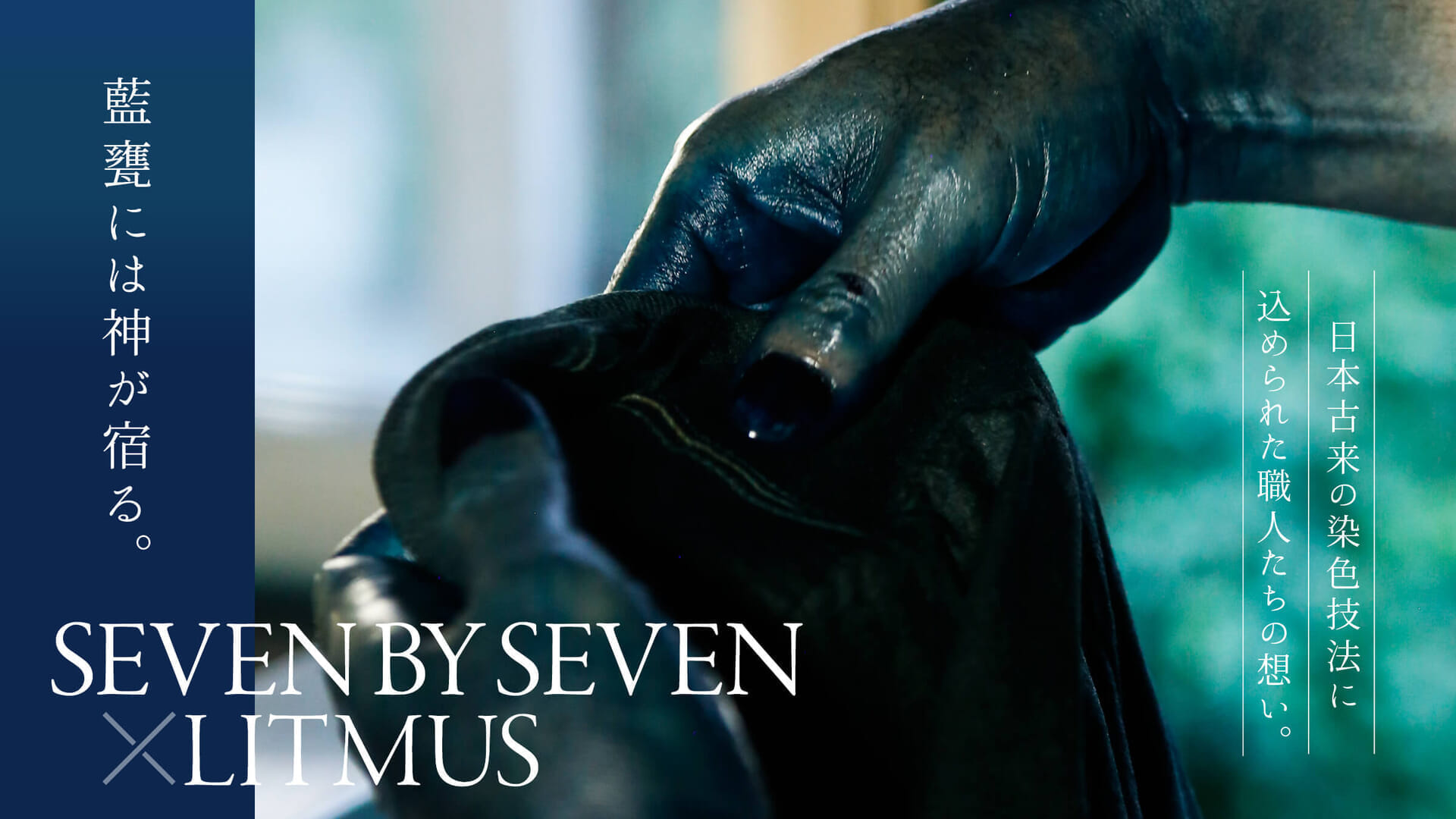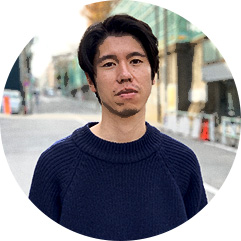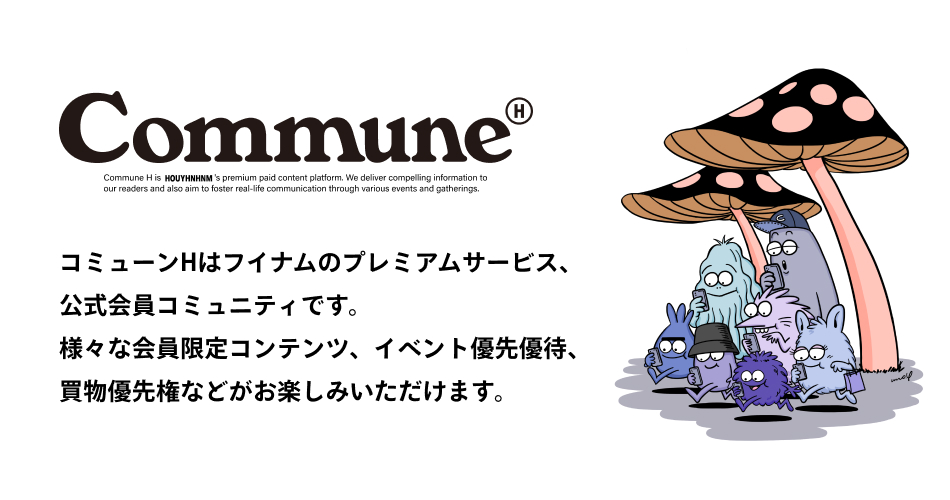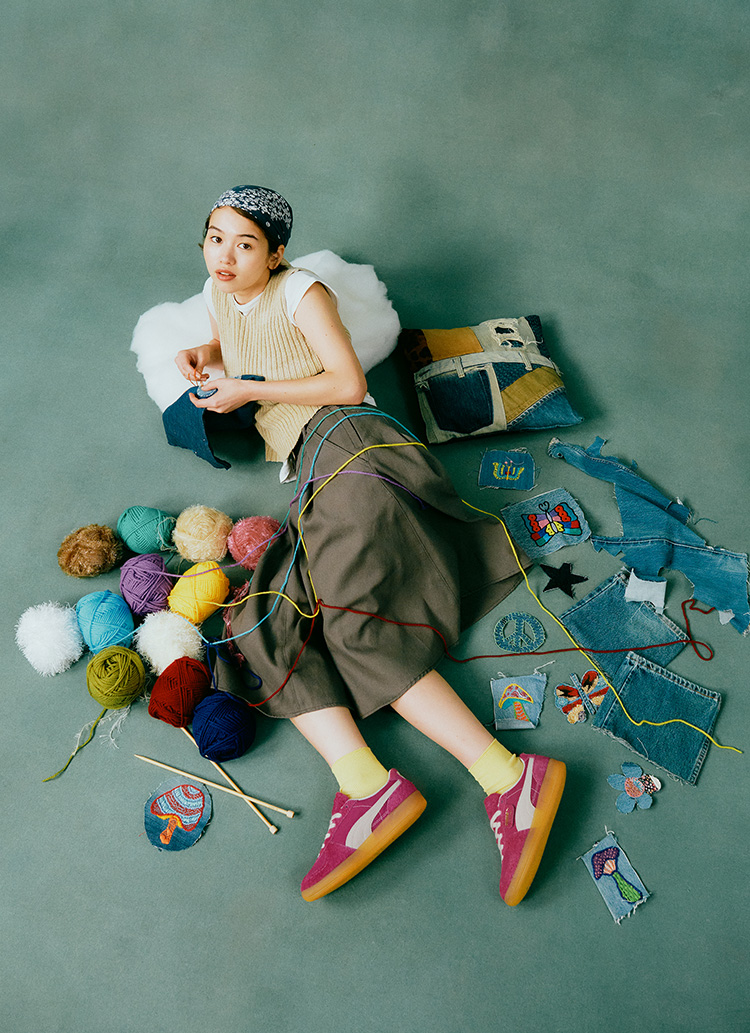I do it to create a huffing and puffing moment.

Here is a T-shirt dyed at the time of the interview, and you can see that even after two dyeing cycles, the indigo color has turned a magnificent shade of indigo. According to Mr. Yoshikawa, "The color fades when the T-shirts are dried in the sun, and the color fades quickly when washed because it does not adhere well to the fabric. That is why it is necessary to dye over and over again.

SEVEN BY SEVEN × LITMUS silk shirt ¥46,200



SEVEN BY SEVEN × LITMUS〉Long-sleeved shirt ¥46,200 each
And this time, "Litmus" dyed these shirts for "Seven by Seven". The shirts, dyed one by one by Mr. Matsui and Mr. Yoshikawa, are covered in a beautiful indigo color, and the expression of the fabric seems to have gained strength.
I feel that the weave of the fabric comes out better after the dyeing process than before. The way it appears is unique, and there is a sense of increased thickness. Because they are old clothes, they were made in different ages, and the way they were worn and washed by their original owners also differs. By dyeing, you can see this more clearly. It is natural, but I feel that no two pieces are the same.
I can feel the fabric changing when it is being dyed. It's like it's coming to the surface.
It may be an exaggeration to call it a rebirth, but I do it with the feeling that I am changing the clothes into something more attractive.

The dyeing process began when Mr. Kawakami gave the two "Litmus" members some old clothes, but he did not give them any orders regarding the finished product. In other words, everything was left to them.
The way the color comes out changes depending on the material, so I dyed while thinking about how to bring out the charm of the item, rather than just looking at a color sample and applying the color to it. It was like searching for the answer while dyeing.
When you dye, wash, and hang dry outside, you can see the overall color sequence. Then you can see that this item should be a little darker. I took that into consideration and added more colors. Since we dyed a lot this time, I think there will be a moment of surprise when all the colors come together. That's what we are trying to create.

The two members of "Litmus" have been honestly dealing with indigo since their establishment in 2000. Impressed by this way of dealing with indigo, they have received requests not only from Japanese customers but also from overseas collection brands. However, this does not mean that the duo wants to do anything special.
For example, it would be meaningless if we were told that the theme for this season is indigo, but that would not allow us to dye items from brands that have already placed orders with us. There are many customers who look forward to our items every season, so we want to value our efforts with them.
People think this kind of thing can be done instantaneously. However, there are quite a few steps involved just in dyeing a T-shirt. I hope this article will convey some of that information to you.

Three people talking on the edge of the workshop. From left: Yuji Matsui of "Litmus," Junya Kawakami of "Seven by Seven," and Kazuo Yoshikawa of "Litmus" who dyed T-shirts for the interview.
As the clothes are dyed and worn, the indigo color changes to a color that only the wearer can produce. Matsui, Yoshikawa, and Kawakami hope that people will cherish the "attachment" that is created in this way.
The reason why we are so particular about naturally fermented colors is because we like the way they change over time. We started the workshop because we wanted to dye the things around us in those colors. You can say in so many words how much effort it takes, but we want to make it something everyday, not something special.
Looking around overseas, Japan is the only country that has so many indigo dyeing techniques. It is true that the number of indigo dyeing techniques has been decreasing over time. That is why we want to make indigo dyeing available to people in some way. I used to make works of art, but it is difficult to get the message across just by looking at them. That is why I would like to continue to make things that people can hold in their hands, that they can wear and that will accompany them in their daily lives.
If the color fades after wearing and you want to dye it again, I think it is possible to ask "Litmus" to do so again. That is proof that you take good care of your items. I would be very happy if our customers could connect with us in this way.
PROFILE
The company has inherited the "akuhakkodate" indigo dyeing technique, which has been handed down in Japan for centuries and uses only natural materials. While adhering to this technique, the company continues to express "Japanese indigo colors" through unconventional production.
PROFILE
Designer, who moved to San Francisco in the 1990s to work as a dealer of vintage clothing, started Seven by Seven as a concept store in 2013 and launched it as a full-fledged brand in 2015. He has been developing creations based on his own experiences, working on remaking vintage clothing as well as original items.









